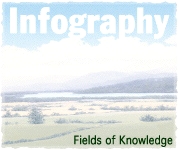
 | |
Emotional Intelligence | |
The following sources are recommended by a professor whose research specialty is emotional intelligence. |
· Goleman, D. (1995). Emotional intelligence. Bantam Books.
· Salovey, P., and Sluyter, D.J. (1997). Emotional development and emotional intelligence. Basic Books.
· Mayer, J.D. Emotional Intelligence Information. http://www.unh.edu/emotional_intelligence/
· Six Seconds for Emotional Intelligence. http://www.6seconds.org/
· Caruso, D. Emotionaliq.org. http://www.emotionaliq.org/
· Goleman, D. (1996). Emotional intelligence: A new vision for educators. (VHS videocassette, 40 minutes). Paul H. Brookes Publishing for National Professional Resources.
· Averill, J.R., and Nunley, E.P. (1992). Voyages of the heart: Living an emotionally creative life. Free Press.
· Gottman, J. (1997). The heart of parenting: How to raise an emotionally intelligent child. Simon and Schuster.
· Payne, W.L. (1986). A study of emotion: Developing emotional intelligence; Self-integration; relating to fear, pain and desire. Dissertation Abstracts International, 47, (01), p. 203A. (University Microfilms No. AAC 8605928).
· Weisinger, H. (1997). Emotional intelligence at work. Jossey-Bass.
· Bar-On, R. (1997). The Emotional Quotient Inventory (EQ-i): Technical Manual. Multi-Health Systems.
· Goleman, D. (1998). Working with Emotional Intelligence. Bantam Books.
· Rosenthal, R., Hall, J.A., DiMatteo, M.R., Rogers, P.L., and Archer, D. (1979). Sensitivity to nonverbal communication: The PONS Test. Johns Hopkins University Press.
· Mayer, J.D., and Salovey, P. (1997). What is emotional intelligence? In P. Salovey and D. Sluyter (Eds). Emotional Development and Emotional Intelligence: Implications for Educators (pp. 3-31). Basic Books.
· Mayer, J.D., Salovey, P., and Caruso, D.R. (1998). Competing models of emotional intelligence. In R.J. Sternberg (Ed.). Handbook of Human Intelligence (2nd ed, pp. 396-420). Cambridge.
· Salovey, P., and Mayer, J.D. (1990). Emotional intelligence. Imagination, Cognition, and Personality, 9, 185-211.
· Schutte, N.S., Malouff, J.M., Hall, L.E., Haggerty, D.J., Cooper, J.T., Golden, C.J., and Dornheim, L. (1998). Personality and Individual Differences, 25, 167-177.
· Plutchik, R. (1984). Emotions: A general psychoevolutionary theory. In K.R. Scherer and P. Ekman (Eds.), Approaches to emotion. Lawrence Erlbaum.
· Saarni, C. (1990). Emotional competence: How emotions and relationships become integrated. In R.A. Thompson (Ed.), Socioemotional development, Nebraska symposium on motivation. (Vol. 36, pp. 115-182). University of Nebraska Press.
· Saarni, C. (1999). The development of emotional competence. Guilford.
· Sternberg, R.J. (1996). Successful intelligence: How practical and creative intelligence determine success in life. Simon and Schuster.
· Wagner, R.K., and Sternberg, R.J. (1985). Practical intelligence in real-world pursuits: The role of tacit knowledge. Journal of Personality and Social Psychology, 50, 737-743.
"The Infography about Emotional Intelligence"
http://www.infography.com/content/707997618572.html
© 2009 Fields of Knowledge
Essex, Iowa 51638-4608 USA